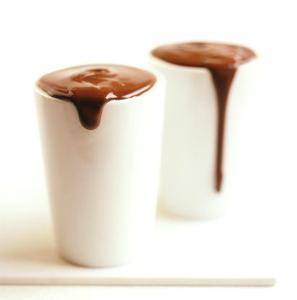
It was also the time when hot drinks became popular in the year. If it is packaged, the beverage shop or coffee shop will add a lid to the hot drink cup to prevent spillage. According to a news on the Internet that can be transmitted during this period of time, the “6th†plastic cup lid commonly used in hot drinks on the market may dissolve toxic substances when exposed to heat, and the 5th cup lid is relatively safe. This statement came out and made many netizens uncomfortable.
Will the lid of the cup be "toxic" when it is hot? What is the meaning of the number on the plastic lid? In response, Dong Jinshi, general secretary of the International Food Packaging Association, said that the number on the lid indicates its material, and the material on the lid of No. 6 is polystyrene. Generally, it will release toxic substances when it is heated above 90°C, as long as the temperature of hot drinks is not Too high, it's safer.
Dong Jinshi explained that polystyrene does volatilize and releases toxic substances, namely styrene, when it encounters high temperatures. Styrene has stimulatory and anesthetic effects on the eye and upper respiratory mucosa, and damages the blood system. Inhalation of high concentrations of styrene can lead to leukemia, infertility, and even fetal malformations and cancer.
"But whether or not to 'detoxify' the key depends on the temperature when it is hot," Dong Jinshi emphasized. "The temperature of hot drinks is generally not up to 90°C, so generally it will not be affected."
He explained that due to the need to hold the hand when drinking, to avoid burns, the temperature of hot drinks is generally not higher than 90 °C, mostly between 60 °C and 80 °C, or even lower. Some media have done field tests and purchased 8 hot drinks to test the temperature immediately. The highest temperature is 83°C, and the lowest temperature is only 45°C.
Dong Jinshi suggested that the public do not have to panic about the rumors that the lid is poisoned. As long as the temperature of hot drinks is not too high, according to the quality of the lid, the styrene that is volatilized and released is very limited and will not cause harm. Because although styrene is harmful, there is also a process of changing the quantity to qualitative change. According to the Joint Expert Committee on Food Additives under the Food and Agriculture Organization of the United Nations and WHO, the daily intake of styrene should not exceed 0.04 mg/kg.
However, for plastic containers used daily such as lunch boxes, Dong Jinshi suggested using No. 5 plastic products. “The No. 5 cover is considered relatively safe because it is made of polypropylene and is more heat-resistant and can even be used for microwave heating.â€
What are these plastic codes? For what purpose?
China's national standard "signs for plastic products" (GB/T 16288-2008), code-named 1 to 140, the terms and abbreviations of various plastic materials are stipulated. Such as common types of plastic materials in life:
No. 1: Polyethylene terephthalate (PET). Commonly used to make mineral water bottles, carbonated beverage bottles, juice bottles, etc., can be heat-resistant to 70 °C, suitable for warm or cold drinks.
No. 2: High-density polyethylene (PE-HD). Suitable for food and medicine packaging, cleaning products and bath products bottle, shopping bag, trash, etc., can withstand 110 °C high temperature, with good heat resistance and cold resistance.
No. 3: Polyvinyl chloride (PVC). Mostly used for making artificial leather, wire and cable jackets, etc. In case of high temperature, it is easy to precipitate toxic substances and even cause cancer. In pharmaceutical and food applications, it is basically replaced by PP and PE.
Number 4: Low density polyethylene (PE-LD). It is commonly used in hose packaging for plastic film, cling film, toothpaste, and facial cleanser, as well as in the packaging of milk cartons and beverage boxes. Avoid use above 100°C.
No. 5: Polypropylene (PP). Commonly used in microwave lunch boxes, disposable lunch boxes, packed lunch boxes and so on. The ability to withstand 120 °C high temperature, can be put into the microwave heating, is the world's recognized relatively safe material.
Number 6: Polystyrene (PS). Commonly used in transparent cake boxes, fast food lids, disposable foam plastic tableware, etc., can not be heated by a microwave oven.
Natural pigments are food pigments obtained from natural resources. Pigments extracted mainly from animal and plant tissues and microorganisms (cultures), in which vegetative colorants predominate. Natural pigments not only have the function of coloring food, but also have physiological activity. At present, there are 48 kinds of edible natural pigments approved to be used in China, commonly used chili red, beet red, monascus red, cochineal red, gaolianghong, sodium copper chlorophyllin, turmeric, gardenia yellow, carotene, algal blue pigment, cocoa pigment, caramel pigment and so on.
Roselle Calyx Extract,Phycocyanin,Lutein,Butterfly Pea Flower Powder,Beta Carotene Powder,Sodium Copper Chlorophyllin
Xi'an Gawen Biotechnology Co., Ltd , https://www.amulyn-bio.com